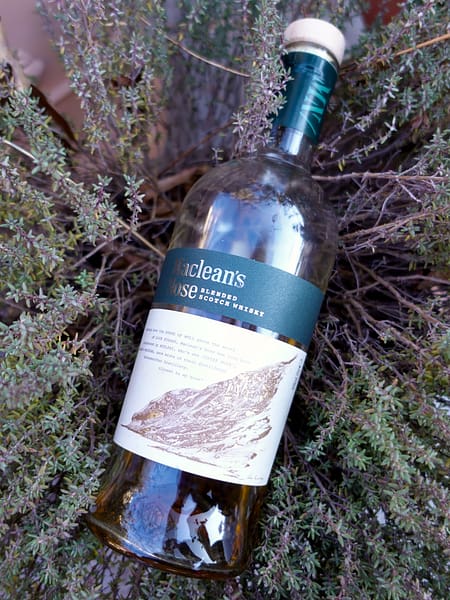I started this series of reviews on Blended Whiskies by asking if they might be a better option to many popular entry-level Single Malts. In this post, I round up this brief exploration of Blends providing reasons for why the answer is a resounding yes.

Why Blends
The reason I started looking into blends is simple. Entry-level single malts, the 40-43% crowd to be clear, seldom deliver a great drinking experience. Great aromas on the nose are let down by weak mouthfeel and taste. There are some exceptions, generally from distilleries producing heavier spirits. Yet they remain few. Blends are not the first whiskies you would think of as an alternative. After all, aren’t Blends pretty much supermarket shelf fodder? Maybe it is time to reconsider this prejudice. There has been a change in the blended whisky scene in the past years. A few producers have launched new Blended Whiskies with an eye to quality. Cold these offer a better experience to new whisky drinkers like me?
After trying some of the popular Blends with whisky aficionados, I am convinced that some can replace more popular malts successfully. If you are a hardcore single malt drinker, you will probably disagree, as the grain component will be more noticeable for you. On the other hand, if you are, like me, new or relatively new to whisky, going beyond categories and preconceptions coming from cheap supermarket blends can be easier. Below you will find the 4 blended whiskies I believe are better alternatives to entry-level single malts.
4 Blended Whiskies better than your popular entry-level Single Malts
Note: The reviews of each of the whiskies below can be found following the link embedded in their name.
4) Compass Box Artist Blend… instead of Glenfiddich 12

A white fruit & apple-blossom floral whisky with a level of extra complexity coming from the addition of some Palo Cortado malt. The most immediate comparison is Glenfiddich 12, which shares the white fruit and apple blossom notes with the Artist Blend.
The nose of this Compass Box blended scotch is delicate and elegant, almost filigree-like. Once on the palate, the intensity goes up a few notches. While many entry-level 40% single malts deliver rich aromas on the nose and disappoint on the palate, at 43% ABV the Artist blend does the opposite, enticing you with delicate aromas on the nose and delivering a rich experience on the taste.
What about prices? Throughout this post I will use the average Whiskybase prices in €. As I write these are:
Compass Box Price: €37.89
Glenfiddich 12 price €37.49 (-1.1%)
At essentially the same price, the better drinking experience of Compass Box Artist blend wins for me. You could argue that a blend should be cheaper than a single malt. I would disagree. Quality trumps categories.
3) Adelphi Maclean’s Nose… instead of Talisker’s NAS Skye and Storm

Since Ralfy made this his whisky for 2024, there has been a lot of chatter on Adelphi’s blend. You can find a few of these opinions at the end of my review (follow the link in the section header). I really enjoyed the rugged, peaty and maritime character of this blend. In my opinion, the closer comparison is another champion of the West Highlands character, Talisker, and specifically the two entry-level NAS Skye and Storm (which I have tried but not reviewed). Admittedly both can be often found on offer for cheaper than Maclean’s Nose in some countries (Germany in particular), but the average prices around Europe are higher. Skye’s average price is €39.44 (+12.5%), and Storm’s €46.76 (+33.4%). While both Skye and Storm are interesting entry-level drams, both are quite straightforward whiskies. Given the choice, I would pick Maclean’s Nose for the different layers (maritime, sherry, funky fruit, peat) that it brings to the table.
A few reviews have drawn comparisons to Adelphi’s own Ardnamurchan AD, which is likely a main component of this blend, arguing Maclean’s nose does not reach that quality. I do agree on the quality point (I have tried but have not yet reviewed AD/). Where I disagree is when the two are compared on the same level. Using Whiskybase again, in my market (Europe) AD is >60% more expensive than Maclean’s Nose (€56.62 vs €35.06). Maclean’s Nose might be a good intro to the Ardnamurchan character, but the two play on completely different price levels.
2) Cutty Sark Prohibition… instead of bourbon forward entry-level single malts

This one stands a bit on its own. Being a 50% ABV whisky it has a potentially clear advantage in intensity of aromas and flavours vs 40% malts. What makes this punchy, fun blend a great alternative for entry level drinkers is the price and the style. The backbone of the Prohibition is that of a malt-forward whisky with some noticeable bourbon influence. The price puts it close, albeit below (€26 vs €31-36), to whiskies like the anCnoc 12, Tomatin Legacy or even, please spare me, Glenlivet 12.
The grain spirit is, to me, more noticeable in the Cutty Sark Prohibition than any other whiskies in this list. Even considering this I still prefer it, as a drinking experience, to the Single Malts I just mentioned. Yes, it is less complex, but I’d happily trade that for how much enjoyment this is for less than €30.
1) Thompson Bro.s TB/BSW – the best entry-level sherried whisky for price and quality

TB/BSW is by far my favourite among the blended scotches I have tried. Its complex sherry notes show complexity well beyond the stated 6 years. Those 6 years refer, after all, only to the age of the youngest component. Contrary to the other three whiskies on this list, I am not arguing this is better than its single malt counterparts. Some of the frequently mentioned entry-level sherried single malts provide very good quality. Glendronach 12, Glenallachie 12, and Royal Brackla 12 (all in the queue to be reviewed) are all great examples of this category.
What they are not, is cheap: the average European prices for these three whiskies range from 54 to 60€. TB/BSW goes on average for about €42. We can argue that because it is a blend it is a step behind its single malt siblings. Having done a quick side-by-side recently, I would argue that it is closer in quality than you would think. And at that price, sign me up for another bottle. This is one I will keep buying as long as the Thompson Brothers can source the spirit needed to keep the quality as high as it is.
And finally, on gap to fill
There is one type of whisky that is missing from this list. Especially if Blends should offer a 360 alternative to entry-level single malts. The one glaring gap is a heavily peated blend which might take the place of some of the entry-level Islays. I have some doubts if I will find a Blend in this category that can stand up to malts, as the grain component might dilute the peat too much. Nonetheless, hard to say without trying. One of the Black Bottle Alchemy series whiskies might be the one to fill this need. I will try to grab one and update this post soon… if the quality is there.
If you have other suggestions on peated blends please leave a comment, I would be grateful.
P.S. As I was finishing this post I watched Whisky Lock’s review of Maclean’s Nose. I was happy to hear someone with Shane’s experience raise the same question. His statement that Blends are suffering an identity crisis got me thinking. I get where this is coming from: you have the usual supermarket blends, a group of producers putting efforts into quality and fairly priced bottles and others trying to elevate blends beyond their perceived place in the market (Turntable, Woven). And in some cases, trying to redefine the concept of blend altogether, like Woven with its Superblend.
Maybe, more than an identity crisis, this is a moment where some are trying to redefine what Blended Whisky should be. As often in situations like these there will be successes and failures, some trying to exploit things for money and some doing it for passion. One thing is for sure, the Blended whisky space is not boring right now.
Stay tuned for the next leg of the journey, diving a bit deeper into Bourbon cask-aged single malts.
Interested in my take on a specific whisky style? Check the full Journey here and jump to the relevant Chapter.
If you have enjoyed this content, please share a comment below and consider supporting the cost of this blog via the button below